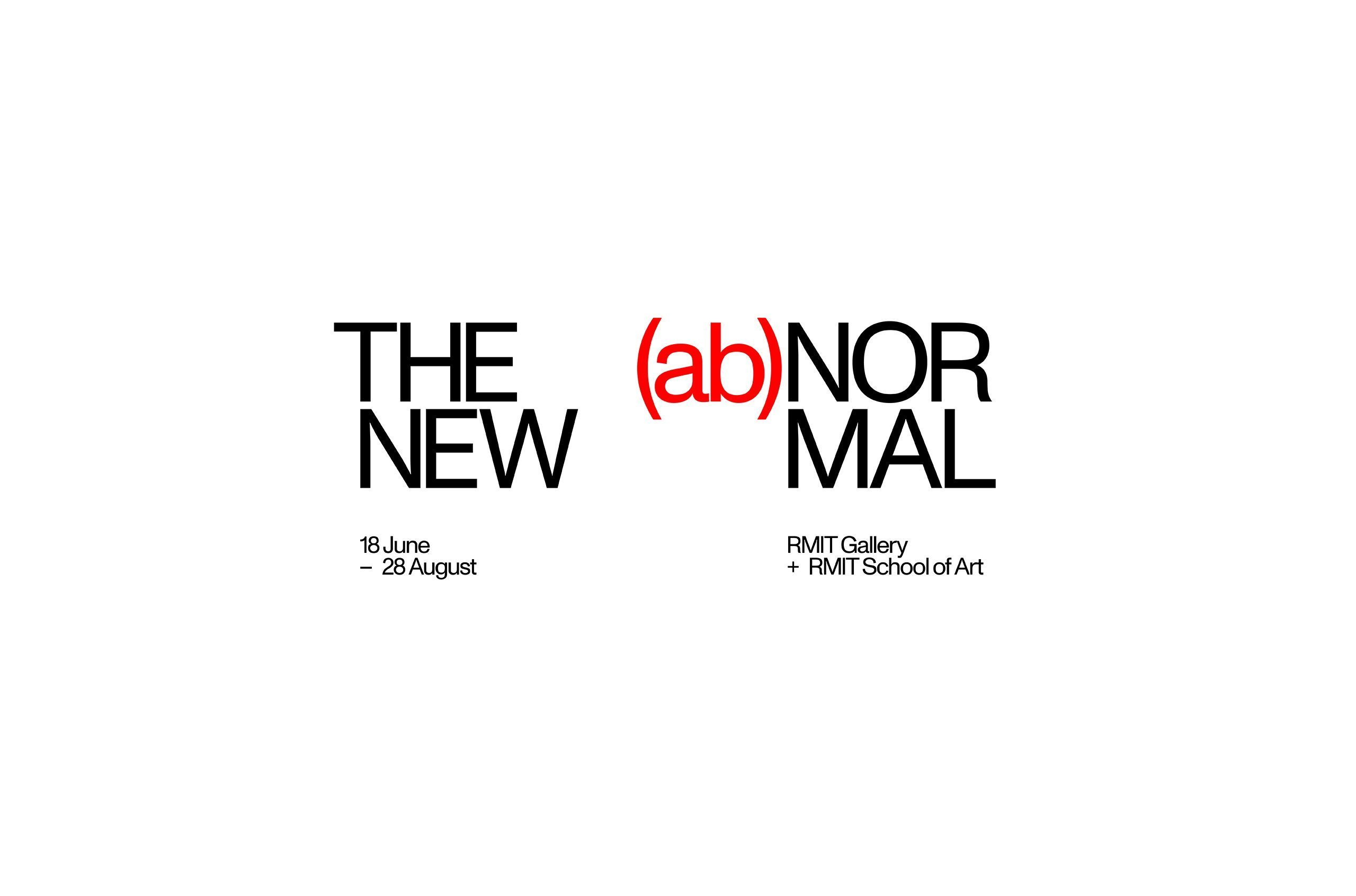
Exhibition18 Jun – 16 Oct 2020
The new (ab)normal
EXHIBITION EXTENDED TO 16 OCTOBER 2020 – BY POPULAR DEMAND RMIT Gallery’s inaugural online exhibition The new (ab)normal provides a real-time snapshot of how artists…
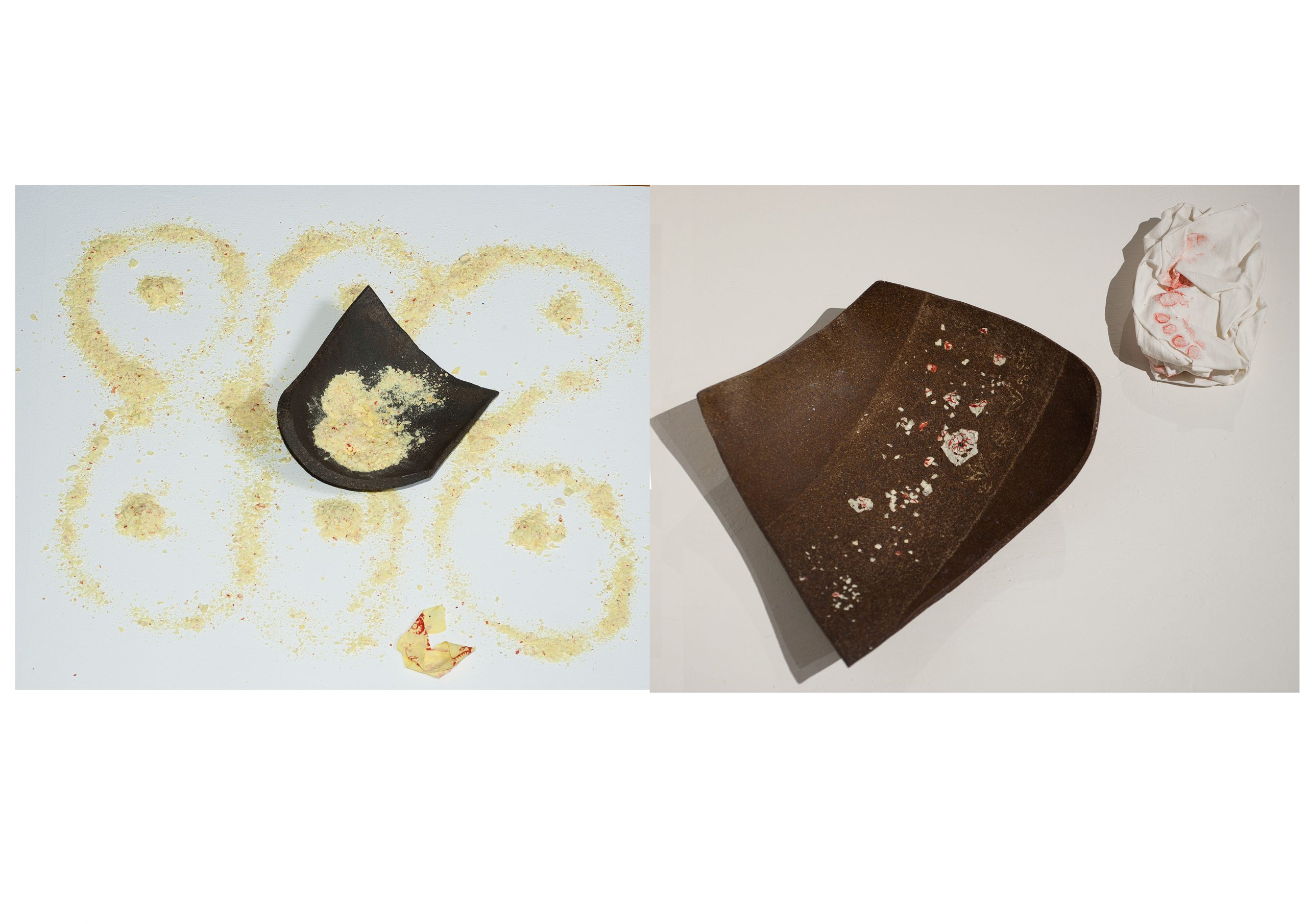
Varuni Kanagasundaram’s creative practice incorporates community participation and cultural rituals undertaken by the South Asian ethnic community. For cultural reasons the RMIT PhD student (whose performance and ceramic work features in The new (ab)normal) was discouraged from a career as an artist. She talks about her journey to become a practising artist.
I remember the feeling of being in an imaginative world when I was using my hands to create as a child whether it was at school or home. Having grown up in Sri Lanka my exposure took many forms, both structured as part of school and also what was part of one’s home surroundings. I recall loving activities that required attention to detail such as stitching, drawing, mimicking actions that were part of cultural rituals and domestic activities, assisting my father in wood work activities were all sources of creativity. It wasn’t unusual for presents including cards and decorations for celebratory activities to be hand-made.
When did you think you might pursue a career as an artist and what sort of encouragement did you receive, or what obstacles stood in your way?
I knew my desire to pursue art would eventually find a way having had such a longing that only became more certain and more urgent. I entered into my career path as a professional artist later in life. I had to patiently find a way to make it happen. When it did I also knew I would be devoted to it with such purpose to find its expression. Having come from a migrant background pursuing art is not considered a responsible choice as it is a precarious life with migrant families having struggled to establish themselves in new lands. Certain fields are given more value above others. Often your own voice and self belief that you have a story to tell through creative pursuit, provides the catalyst needed to find a pathway.
What training did you do after you left school to prepare you as an artist? Did you go back to do further training? Why?
Following from the previous question I had to go back to training in art in a progressive as time had lapsed since I did Art at school. I was living overseas at the time in Singapore and I decided to start with evening classes in Ceramics at a Community College for a few years. I then got a portfolio of work together to apply to do a Bachelor of Fine Arts at RMIT University. I commenced in 2010 and the journey started. A research project in the 2nd year of the bachelor’s gave a taste of what I wanted to focus for my research in the honours year. After completing my Bachelor of Fine Arts (honours) I established my studio practice as a professional artist. It allowed my focus of expression specifically in a cultural context to develop before I returned to RMIT University to do my PhD in Art.
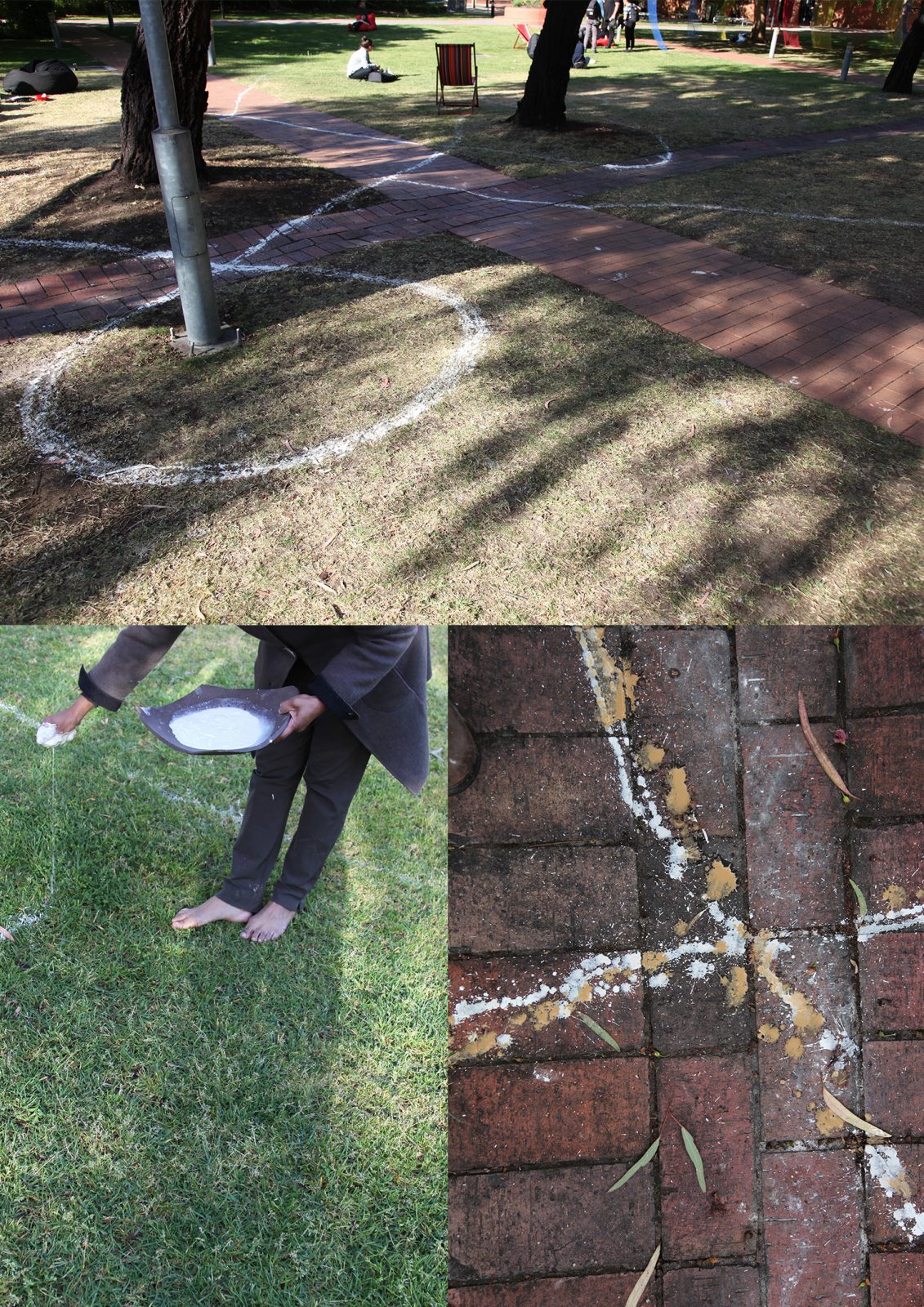
What artists have inspired you as you developed your own personal style? Why did they inspire you?
Judith Watson, Doris Salcedo, Fiona Hall, Martinez Celaya, Sohan Qadri and Wolfgang Laib are some of the artists who have inspired me over the years. I look at artists from a wide spectrum. They reveal interesting ways to explore and express identity in cultural origins/traditions and place of connection; social, political and environmental issues that impact on society; ways of creatively giving acknowledgement and respect; creative expression of ritual, gestural marks, spaces that explore spiritual connection.
What inspires you in your work? Do you start with an image, a photo, your drawings, an idea? Do you develop those ideas in journals?
Mostly it is an idea or a memory that gets triggered leading to the development of an artwork. I let that idea or memory take shape over time through a reflective process. I need to weave in and out of closeness and distance from this initial trigger for the work to capture the essence of the idea and for it to become less representational. The next stage takes the form of drawing or writing notes in a journal and very often making maquettes. I like the tactility of material and find it useful to visualise in a three dimensional manner. Hence small scale models are often what I gravitate to as a means to develop ideas.
How useful is it for you to brainstorm ideas with other artists? Or is yours a solitary process to create work?
Often I have to sit with the idea myself for a time and let it take some form. Some clarity comes about in this initial process. It is after this stage and when I have explored various versions, that I find it good to have conversations with others. It is very important to be discerning about whom I have conversations with as there needs to be an understanding of the underlying meaning that is being conveyed; the cultural perspective; role of the feminine and thus the performer if it is performance based; the experience of the viewer or the community. I find it immensely useful at later stages of development particularly when I am refining my artwork to get feedback from artists. In this process I also become clearer in how I want to express the idea.
What medium do you use to make your work? What sort of techniques do you use in your work? How have you developed your current techniques?
My main medium is clay but textile also remains important to my practice. I translate textile in clay as a means to convey the visual expression of the feminine of the Indian subcontinent. I incorporate textile within the clay to obtain delicacy and fluidity in form. Techniques were developed by experimenting with material quality of clay pushing the potential of clay, combining other materials and testing firing regimes to achieve the delicacy of form. Aspects of science and art come together when working in ceramics.
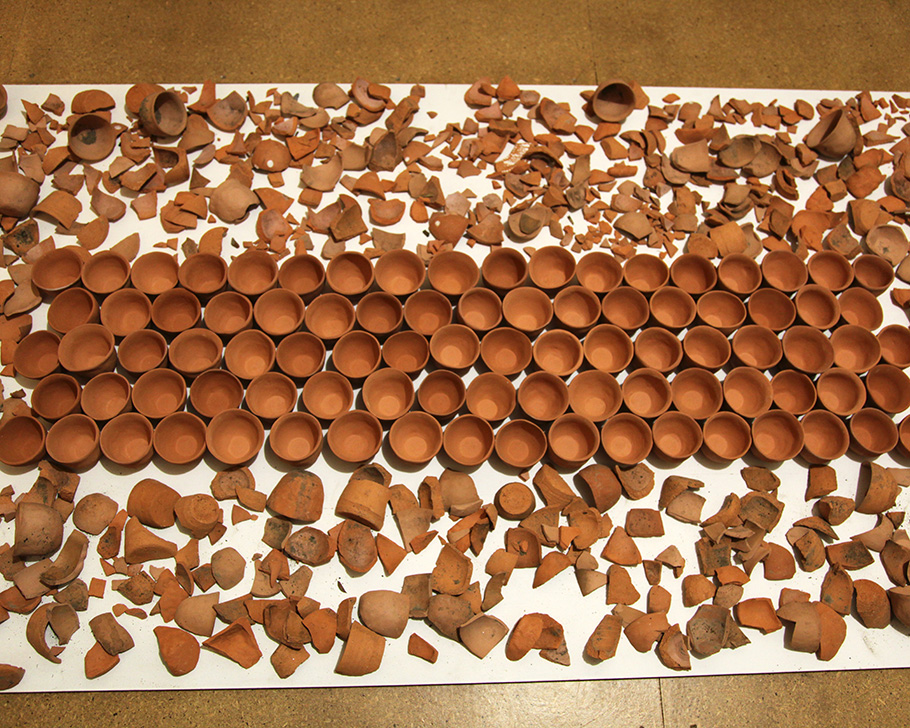
What is the personal symbolism in your work?
Migrant experience is told through a visual story-telling, translating cultural practices and rituals of the East. The artwork has ritual traces that have cultural origins in the Indian subcontinent; the rituals are translated, deconstructed and reassembled; the presence of the feminine is emphasized through interpretation of textile in clay, translation of ritual acts of women and performance; colour synonymous with the Indian subcontinent; has participation of community in making and performance to experience aspects that reflect migrant dislocation.
How would you like viewers to approach and interpret your work?
The artwork is an invitation to public to experience transience, loss and fragmentation as part of migrant dislocation through materiality of clay, performance and participation. The artwork both in gallery spaces as well as public outdoor spaces is experiential in order to convey to the viewer the universality of meaning that lies at the basis of dislocation and rupture from cultural and familial connections. The broader community are pivotal to bringing an understanding and healing that is needed for migrants and feel a sense of being welcomed in order to integrate in new lands.
It’s 2020 and we are the in midst of a global pandemic. If you could go back and give yourself one piece of advice before any of this began what would you say?
Use limitations as opportunities and view them openly. When constraints are imposed it begs a response that requires a shift. Although as creative practitioners we know this philosophically but when they are imposed and not controlled by ourselves we really do not extend ourselves sufficiently. The opportunities that have come about during times of COVID have surprised me. My studio practice expanded to incorporate other disciplines looking for ways to engage with community differently. In fact it is has become even more important. I have always relished the slowing down of time as it has allowed me to think more broadly. One also observes what we are surrounded by more acutely. We are also less distracted because of isolation and we have the time to notice and reflect. This feeds new ways of creating.
See Varuni’s work in The new (ab)normal
Check out Varuni’s personal website to explore more of her work
Story by Evelyn Tsitas

Exhibition18 Jun – 16 Oct 2020
EXHIBITION EXTENDED TO 16 OCTOBER 2020 – BY POPULAR DEMAND RMIT Gallery’s inaugural online exhibition The new (ab)normal provides a real-time snapshot of how artists…
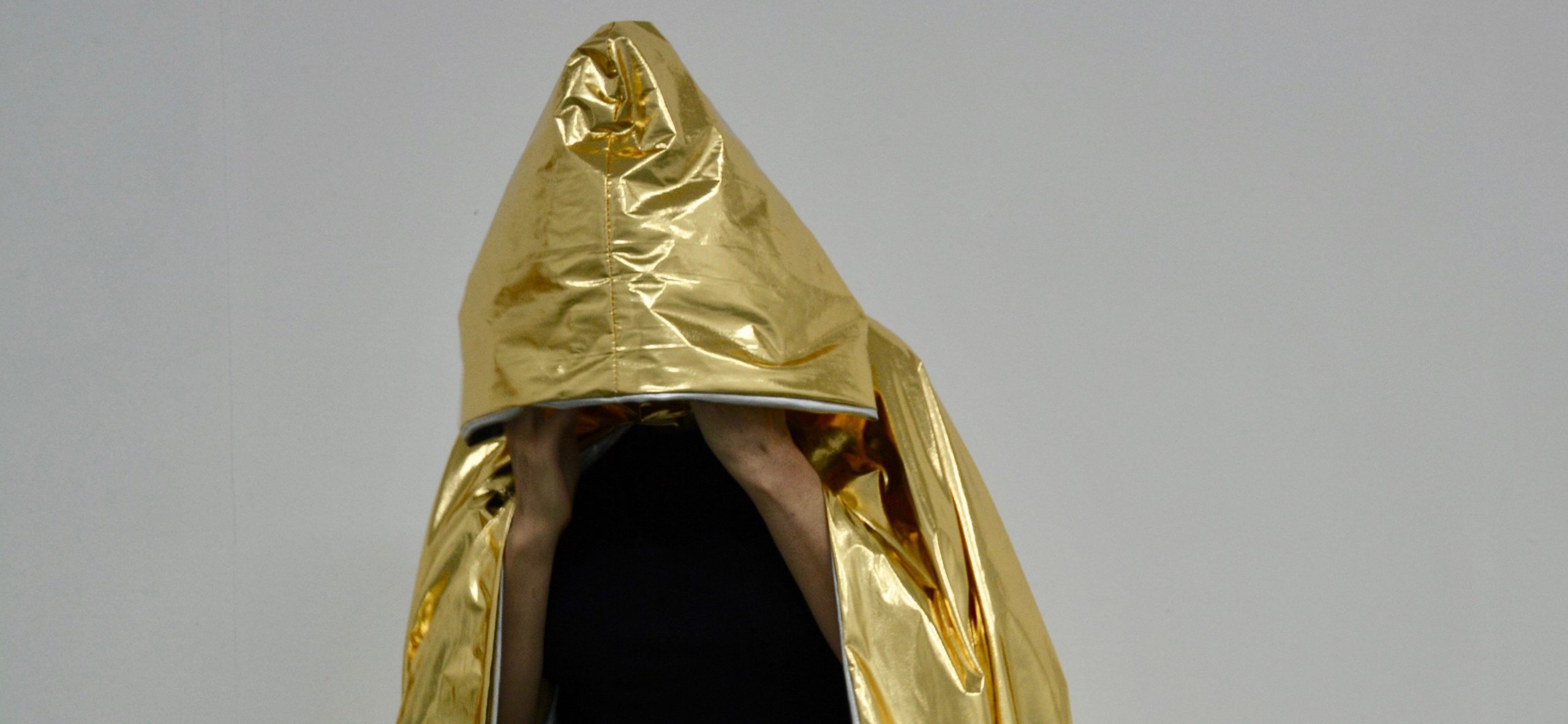
Event29 Jul 2020
What does it mean for artists and curators when galleries are closed, studios can be inaccessible, and uncertainty about the future feels…
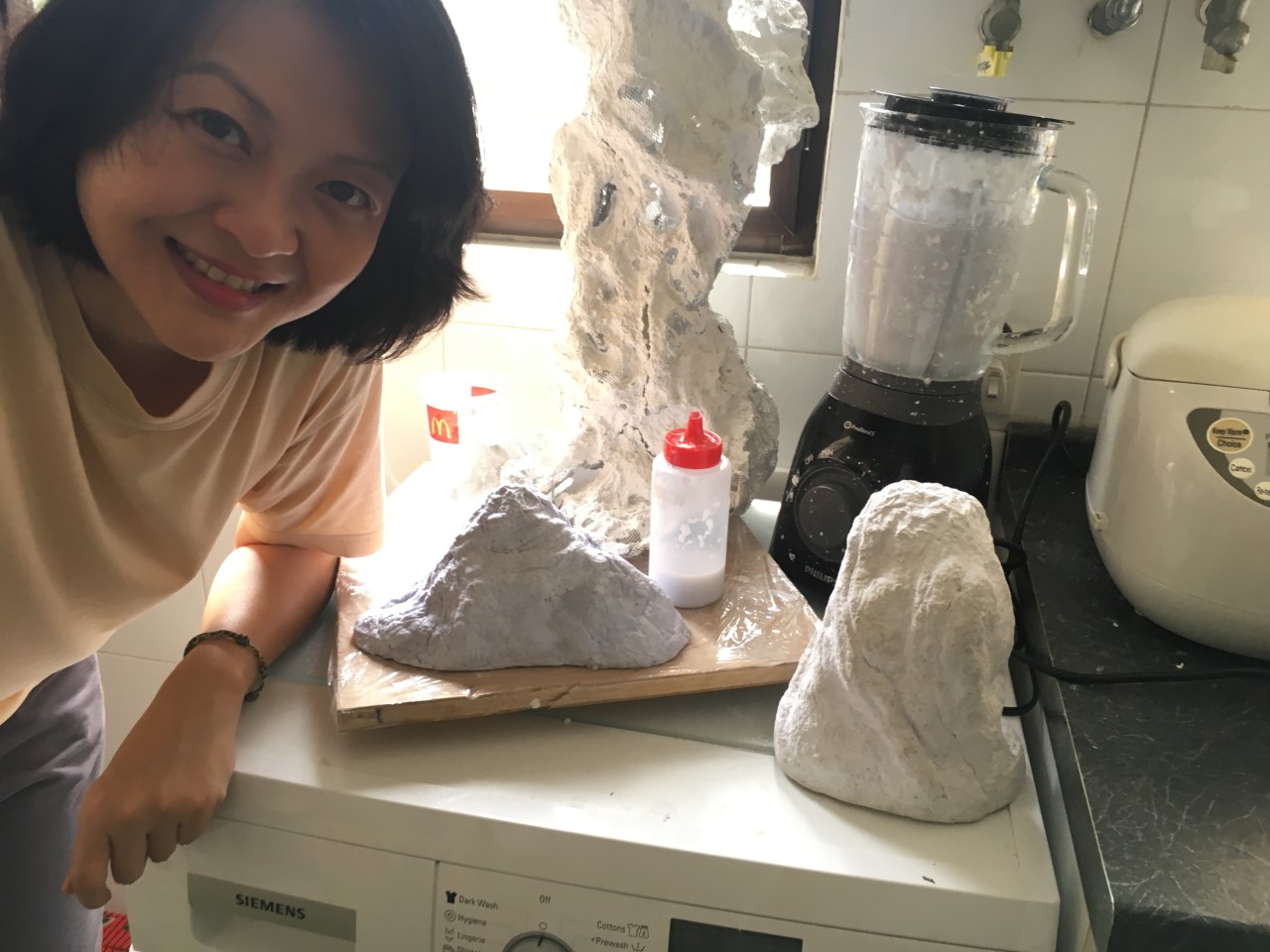
News28 Jul 2020
Cordelia Tam is participating in RMIT’s online exhibition The new (ab)normal. Cordelia received her Professional Diploma in Fine Art from Hong Kong…
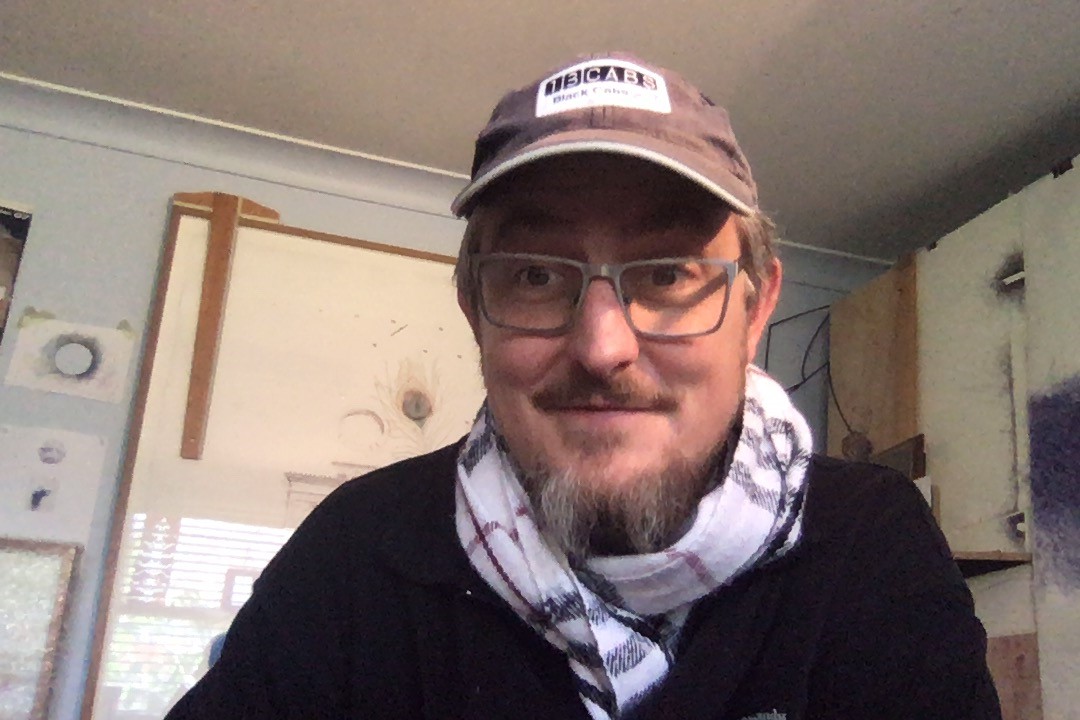
News1 Jul 2020
Ben Sheppard is participating in RMIT Gallery’s online exhibition The new (ab)normal. RMIT intern Kate Tranter asked him about his experience in…

News30 Jul 2020
What does it mean for artists and curators when galleries are closed, studios can be inaccessible, and uncertainty about the future feels…
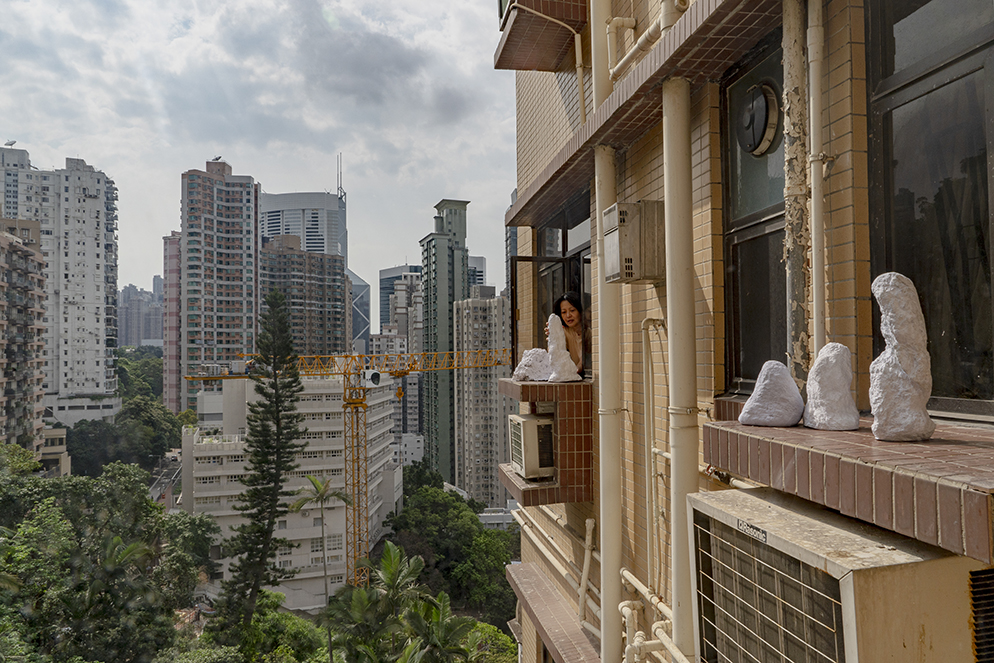
News17 Jun 2020
From creating art in a high-rise dwelling to managing social isolation, RMIT Gallery’s first online exhibition provides a glimpse into how artists are responding to their circumstances under COVID-19. …
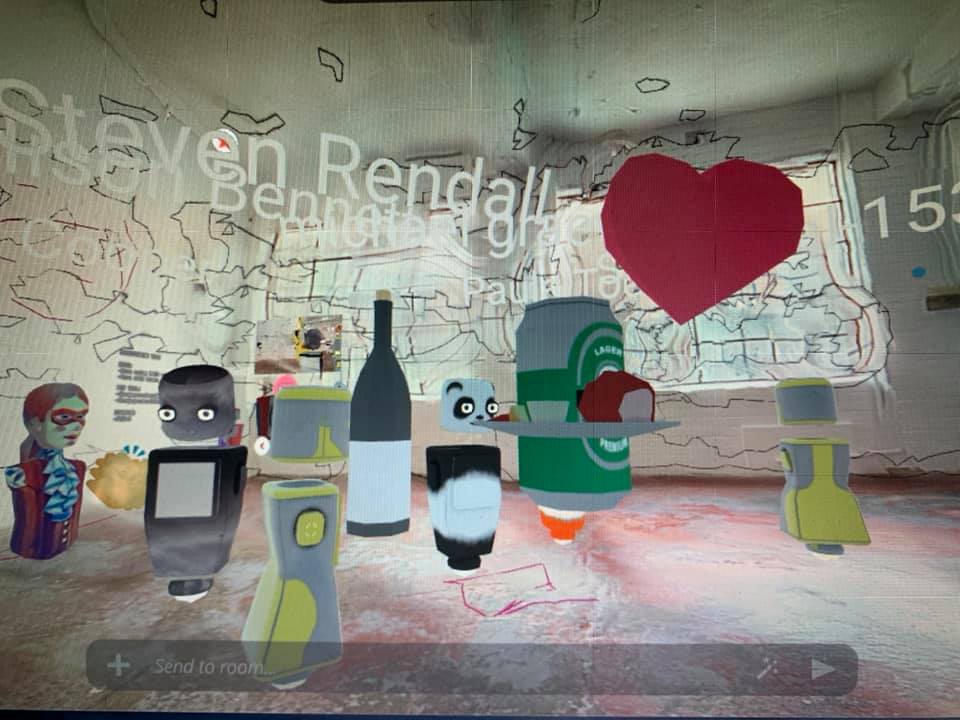
News19 Jun 2020
RMIT Gallery’s inaugural online exhibition The new (ab)normal was launched on June 18 with a gathering of artists in a virtual space…